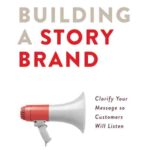What does it take to build a successful business? A great idea, lots of money, talented owners? The answer is none of these. To build a successful business, you must acquire customers and grow your base. Businesses fail because they fail to gain traction with customers.
Focus on Marketing from Day One
One of the problems business owners face is that they focus too much on the product or service first and leave marketing until later. Business owners need to focus on marketing earlier to see what resonates with customers to steer their design in the right direction. Rather than overweighting the time devoted to designing a product or service offering, give marketing an equal amount of attention from the beginning. This way, you can build traction while building your product or service and create demand even before you release your Minimum Markable Product.
Many businesses fail not because their product is poor, but because they can’t attract enough customers. By engaging with clients early in the process, you can get much-needed feedback and opinions from them before you get too committed to a final offering. Talking to prospective customers earlier in the process will help you hone your marketing message to emphasize the features they like most and write marketing copy that will resonate with them because you are using their words.
Three-Step Traction Process
According to Gabriel Weinberg and Justin Mares, authors of Traction: How Any Startup Can Achieve Explosive Customer Growth, you should follow a three-step process.
The first step is to list all the ways to find and achieve traction. The next step is to test several traction channels to determine the most effective. The last step is to optimize and scale the best channel. This process aims to prevent you from picking an over-crowded and inefficient channel to use for marketing or to spread your marketing across too many channels that you have not yet mastered or can’t gain sufficient volume to move the needle.
Step One: List Potential Traction Channels
The first step is to list all the channels you can use to bring attention to your offering. Below is a list of potential channels to start your thinking.
Related Post: How to Correctly Target Web Traffic to Drive Growth
Attract New Customers (Organic)
- Content marketing
- Blogs
- Articles
- Press releases, including unconventional PR such as publicity stunts or customer appreciation
- Videos
- Seminars/Webinars
- Chatbots
- Website
- Review sites
- Social Media groups
- NFC Beacons
- SEO
Rent Access to Customers (Paid Access)
- Commission sites
- TV
- Radio
- Cable channels
- Streaming sites
- Direct mail
- Telemarketing
- Banner ads such as those seen on the Internet
- Affiliate marketing
- Social Media ads
- Print Ads
- Display Ads such as billboard or bench ads
- Product placement
- Kiosk and tradeshows
- Sponsorships
- Pursuing Partnerships
Grow Customers you Already Own
- SMS
- QR codes
- Posting to fans/followers
- Subscriptions
- Catalogs
- Viral marketing – where existing consumers are encouraged to share information about the company’s products and services.
Another interesting channel that does not fit neatly into the attract, rent, and own framework is Engineer as Marketing. This channel includes sharing Freemium tools with users that will find them so useful they share them with others, such as calculators, checkers, checklists, speed testers, mortgage calculators, etc.
Step Two: Test Traction Channels
Review all the possible channels in step one and select three to five channels that you think are most likely to get traction with your target market.
One problem Weinberg and Mares shared in their book is that too many people focus on the channels they are most comfortable with, and too often, ignore the ones they are unfamiliar with. For example, suppose you are more familiar with running social media ads. In that case, you will frequently give greater weight to this channel while ignoring the writing of articles that perhaps you are not as familiar with or have the skills for. You may have to learn a new channel, but the chances are it will pay off in the long run.
In this testing step, you will run a few relatively inexpensive tests to see which of the three to five channels you selected will get the most traction and which channels underperformed. Your goal is to find the channel that is most likely to attract customers profitably and in sufficient volume to have an impact on your business.
In the testing step, you should not obsess over optimization. Optimization occurs in step three. All you want is to get a sense that if you were to spend more time and money learning the nuances of the best channel, you could optimize things to the point of converting prospects into customers most efficiently.
Step Three: Optimize the Best Channel
Once you settle on the best-performing channel, you should put the wood behind the arrow and aggressively target the channel. Rather than spread your focus across multiple channels, you will want to focus all your marketing time and energy on mastering this channel. Too many businesses spread their focus across several channels, never achieving mastery in any one of them, and wondering why they are not getting the expected results. In fact, mastering a single channel to maximize its potential is one of the core tenets of the book, which the authors consider a huge differentiator.
At some stage, you may hit a point of diminishing returns from your best channel. If you reach this point, you should continue to support the original channel and expand to the next best channel.
Critical Path Concept
It is important to define your traction goal. Your traction goal can be revenue, number of customers, or another metric that shows you are moving in the right direction. You need to feel confident that you are on the right path and stick to it. The goal is to define the critical path that represents the most direct route to hitting these numbers.
Adding things like vanity features to your product or service is often tempting, but they do not necessarily help you meet your traction goal. You need to strip away all those things that can distract you and waste critical time and effort until you can get to the point where the business is more stable and achieves profitability.
Conclusion
Businesses must focus on marketing from the beginning to build traction with customers and achieve success. The three-step traction process, as outlined by Gabriel Weinberg and Justin Mares in their book “Traction: How Any Startup Can Achieve Explosive Customer Growth,” involves identifying potential traction channels, testing several channels to determine their effectiveness, and then optimizing and scaling the best channels. By following this process and keeping in mind the importance of early customer feedback, businesses can increase their chances of finding the right marketing channels and achieving explosive growth.
How can you apply the concepts from the book Traction to your company to acquire customers?












